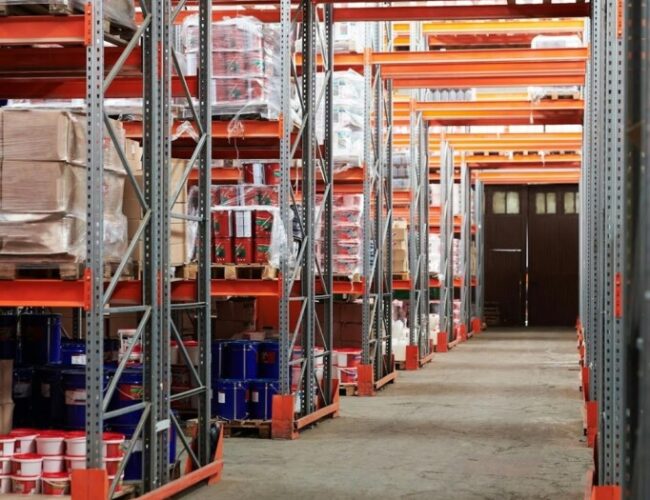Warehouses are the backbone of modern supply chains, ensuring that goods flow smoothly from manufacturers to retailers and ultimately to customers. In an era where speed, accuracy, and cost-efficiency are paramount, businesses are rethinking how their warehouses operate. Efficiency is not just about storing more items but about maximizing space, streamlining workflows, and leveraging technology to minimize waste. Highly efficient warehouses achieve this balance by combining strategic planning, innovative tools, and disciplined execution.

Reducing Losses and Maximizing Accountability
Efficiency is measured by speed and by the ability to minimize losses. One of the biggest threats to warehouse operations is shrinkage, which refers to the loss of inventory due to theft, misplacement, or damage. For businesses committed to optimizing their supply chains, preventing warehouse inventory shrinkage becomes a top priority. Modern warehouses rely on surveillance systems, controlled access points, and regular audits to maintain accountability.
Barcode scanning and RFID technology track items at every stage of storage and movement, reducing opportunities for error or theft. Clear labeling and organized shelving prevent misplaced goods, ensuring that every product can be located quickly. Establishing strict processes for receiving, handling, and shipping reduces damage, further safeguarding inventory.
By investing in preventative measures, warehouses protect profits and improve trust with clients who rely on timely and accurate deliveries. Efficiency thrives when losses are minimized and accountability is built into every process.
Leveraging Warehouse Management Systems
Technology is at the heart of warehouse efficiency. A robust Warehouse Management System (WMS) enables real-time tracking of inventory, automated order picking, and streamlined scheduling. These systems reduce human error and ensure that stock levels remain accurate.
A WMS integrates seamlessly with broader supply chain platforms, providing visibility from procurement to distribution. For example, predictive analytics tools within a WMS can forecast demand, helping businesses stock the right items at the right time. This prevents costly overstocking or shortages that slow down operations.
Automation within these systems further boosts efficiency. Mobile scanners, automated guided vehicles (AGVs), and voice-directed picking help workers complete tasks faster and with fewer mistakes. With advanced technology handling routine processes, human employees can focus on higher-value responsibilities such as quality control and problem-solving.
Optimizing Layout and Space Utilization
The physical design of a warehouse plays a significant role in efficiency. Poorly planned layouts lead to wasted time, unnecessary movement, and higher labor costs. Efficient warehouses are designed with logical product placement, ensuring that fast-moving items are located near shipping areas while slow-moving goods are stored further away.
Vertical space utilization is another important strategy. Instead of expanding outward and increasing costs, warehouses can maximize storage by implementing mezzanines, taller shelving units, and automated retrieval systems. Wide, clear aisles allow equipment like forklifts to operate safely and quickly, while dedicated zones for receiving, picking, and packing reduce congestion.
Even small improvements in layout can lead to major gains in speed and productivity. When workers travel a shorter distance to locate goods, orders are fulfilled faster, and labor efficiency increases.
Focusing on Employee Training and Engagement
No matter how advanced the technology, people remain central to warehouse success. Well-trained employees ensure that systems and processes are used correctly, while engaged workers contribute ideas for continuous improvement. Training programs that cover equipment operation, safety protocols, and software usage are crucial for maintaining smooth operations.
Employees who feel valued and supported are more likely to stay with the company, reducing turnover and the costs associated with training new staff. Creating clear communication channels, offering career advancement opportunities, and recognizing achievements all foster a motivated workforce.
Safety is another cornerstone of employee-focused efficiency. Warehouses that prioritize safety protect their teams and avoid costly downtime from accidents. Regular safety drills, protective gear, and ergonomic practices create an environment where workers can perform their duties confidently and efficiently.
Implementing Just-in-Time Inventory
Holding excess inventory ties up capital and requires additional storage space, both of which reduce efficiency. Just-in-Time (JIT) inventory systems minimize these issues by ensuring goods arrive exactly when they are needed. This approach reduces storage costs, prevents waste, and keeps operations lean.
To make JIT work effectively, warehouses must have reliable suppliers and strong logistics networks. Real-time communication with suppliers and transport partners ensures that goods arrive without delays. While JIT requires careful coordination, it pays off by streamlining operations and keeping warehouses from becoming overcrowded.
Embracing Sustainable Practices
Sustainability is increasingly becoming not just a corporate buzzword but a critical measure of operational efficiency in warehousing. Clients, regulators, and consumers alike are paying closer attention to the environmental impact of supply chains, and warehouses sit at the center of that conversation. By adopting green initiatives, warehouses not only reduce their carbon footprint but often discover that sustainable practices align directly with long-term cost savings and efficiency gains.
Reducing energy consumption is one of the most immediate and impactful steps. Traditional lighting systems, for example, can be replaced with LED fixtures that consume far less electricity and last significantly longer, lowering both energy bills and maintenance costs.
Solar panels installed on expansive warehouse rooftops provide renewable power, offsetting grid usage and stabilizing energy expenses. Smart climate control systems, which automatically adjust heating, ventilation, and cooling based on occupancy and weather conditions, further optimize energy use while maintaining comfortable and safe working environments.
Data-Driven Continuous Improvement
Efficient warehouses treat operations as a constantly evolving process. Data collection and analysis provide insights into bottlenecks, labor productivity, and order accuracy. By tracking metrics such as pick rates, error rates, and turnaround times, managers can identify areas for improvement and implement changes.
Continuous improvement methodologies, such as Lean and Six Sigma, provide frameworks for reducing waste and maximizing productivity. These approaches encourage warehouses to refine processes regularly, ensuring that efficiency gains are not one-time improvements but part of an ongoing culture of excellence.

The secrets behind highly efficient warehouses are not hidden in one single innovation but in the combination of strategies that address technology, people, processes, and sustainability. From preventing inventory shrinkage to leveraging advanced management systems, every step contributes to a finely tuned operation that delivers speed, accuracy, and reliability.
As supply chains become more global and customer expectations continue to rise, efficient warehouses will remain vital to business success. Those that embrace technology, invest in people, and continually refine their practices will meet today’s demands and prepare themselves for the challenges of tomorrow.